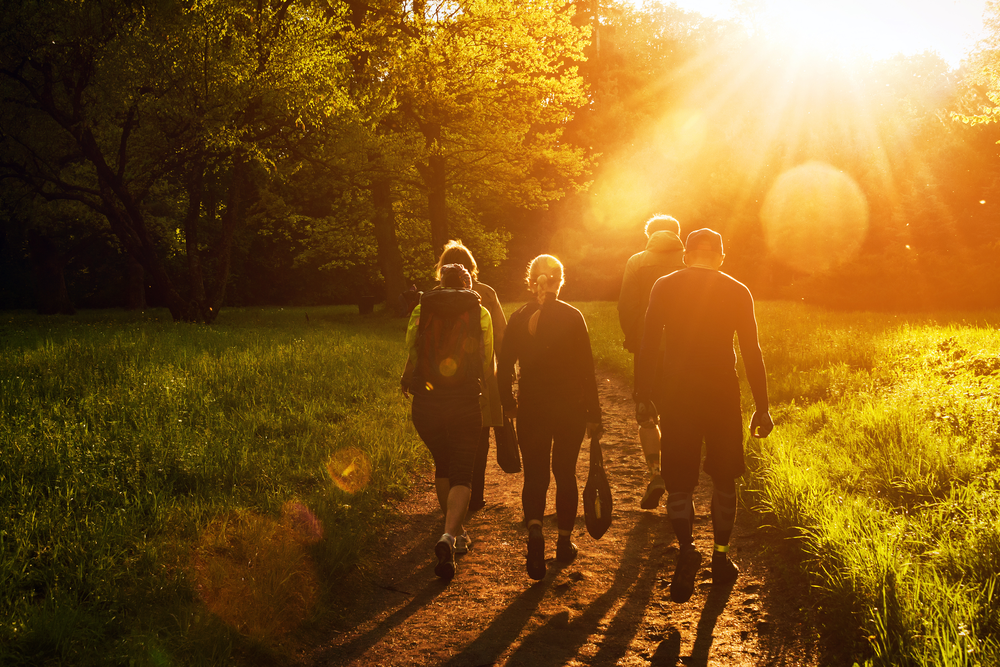When we become aware that recovery is necessary, nearly every one of us needs direction—both the person who needs help and the people who care about them. In this piece, Promises Brazos Valley explores the length of the addiction recovery process, the difference between treatment and recovery, and what happens after rehab. Recovery is truly a miracle that transforms lives, heals emotional wounds and can repair broken relationships. Keep reading to learn more about what makes the recovery process tick.
What’s the Difference Between Treatment and Recovery?
Residential addiction treatment and detox are very often a part of the addiction recovery process. The recovery process also includes what happens after rehab. The truth is, if the stubborn determination were enough, addiction treatment programs wouldn’t exist. The main reason residential addiction treatment exists is to afford people the best possible chance at lasting recovery.
Think of recovery as your new dream home. It’s where you want to live for the rest of your life. In this scenario, treatment is like clearing the land, pouring the foundation, getting all the utilities connected and the building underway. A residential addiction program will provide you with the blueprints for your recovery too.
Recovery is a challenge for anyone. It makes sense to put yourself or your loved one on the best possible footing to take it on. That’s what a quality program like Promises Brazos Valley can do for you or your loved one.
The best way to begin recovery is with new insight into yourself. Understanding your triggers and having tools to maintain your progress is essential.
When life throws curves at us, as it inevitably does, a person who has had treatment is much more able to adapt and respond. Treatment consists of the medical and psychological care you get to stabilize you and prepare you for a lifetime of recovery. Recovery is treatment and what happens after rehab.
The Addiction Recovery Process and How to Help Someone
People often make the decision to get help when they hit their proverbial bottom, though bottoming out is not the only time they can ask for help. If someone recognizes that they are going down a path that could lead them to the bottom, they can ask for help before they get there. The path will vary a great deal from person to person.
What is consistent is that they’ve made it to a place where they decide they can go no further. Circumstances or consequences have led them to the place where the pain of continuing the addictive behavior outweighs the fear of getting help.
Not everyone draws that conclusion on their own, though. If someone you care about is living with a substance use disorder, there are some things you can do to help. Approach gently. They may be especially sensitive about feeling accused or blamed.
You can effectively “raise the bottom” for a person by staging an intervention; this is an option worth exploring if someone is unwilling to accept help. Here are some general do’s and don’ts you may find helpful in approaching someone about addiction:
Do
- Let them know you understand addiction is a disease, not a moral failing.
- Remind them that addiction is not their fault, but it is their responsibility to accept help.
- Make yourself available to talk or just listen to them.
- Consider staging an intervention with family or with the help of a professional.
Don’t
- Co-sign excuses or allow them to rationalize dangerous or dishonest behavior.
- Enable the person by providing money they can turn around and use to fund a habit.
- Be afraid to find support for yourself in this process. Remember your own needs.
- Hesitate to ask for help in approaching someone.
How Long is the Addiction Recovery Process?
Simply put, addiction recovery is a way of living. People often inaccurately view residential addiction treatment and recovery as the same thing. They may also see it as something a person does for 28 days, and then they are done and “cured” of addiction. It’s more accurate to see the addiction recovery process as a lifestyle.
It’s something we continue for life. That idea can scare some people at first, especially someone in active addiction.
It’s important to recognize recovery for the gift that it is. Recovery is about continuous growth. It goes so much further than simply putting down booze and drugs. By focusing on improving yourself, the way you look at the world and how you relate to others, you can transform your life.
Recovery affords you the opportunity not only to stop using but to become the best version of yourself. It’s so much more than just being the person you were before, minus the addictive behavior.
It must be. Because without a fundamental change in our thinking and behavior, our chances of staying sober are slim. In 12-step meetings, you will sometimes hear people call themselves “a grateful recovering alcoholic” or addict. But there is more than one way to interpret that statement.
People in recovery are grateful to be free of drugs and alcohol, of course. But many of us also become aware that the profound change in our lives because of recovery probably would not have happened without it. It may seem like a wild notion, but the thing which nearly destroyed us ended up leading us to a better way of living that we wouldn’t have attained otherwise.
This concept is not just putting a difficult experience in a positive light. The idea of being grateful for your addiction or alcoholism because it led you to recovery is a belief held by more people than you might imagine.
As for the addiction recovery process itself, it’s a lifetime of growth, and the path each person follows will be different. For most of us, though, it happens a little something like this:
- Accepting help.
- Medical detox, if needed.
- Residential addiction treatment (usually 3-6 weeks or so)
- Intensive outpatient or outpatient treatment
- Sober living (usually a few months, to as long as a year)
- Living recovery
What is Addiction Treatment?
Addiction treatment is care provided by licensed medical professionals through a clinical facility. It may involve a patient staying at the facility or in sober living accommodations. Treatment is organized by what are called levels of care. At the least intensive levels, a patient may live at home and attend in-person or virtual outpatient treatment.
As a person moves through treatment, they advance through the levels until they are ready to discharge from the program. A person can begin treatment at any of these levels. Which levels of care someone go through and for how long varies. It all depends on their needs.
Treatment and recovery are something to look forward to. Yes, there will be challenges, but a person hopefully finds comfort knowing that they are heading in the right direction. A life in recovery is so much more wonderful than most people can even imagine in the beginning.
The whole focus here is on healing and nurturing the person back to good health, physically and mentally. More than that, it’s about restoring hope, introducing them to a new way to live and giving them the tools they need to sustain their recovery long after they leave treatment.
Here is a description of each of the basic levels of care:
Detox
Detox is the first stop for patients who need medical support to ease withdrawal symptoms. It isn’t always necessary, though. A person addicted to opioids, alcohol or benzodiazepines will usually have some type of medical detox if their pattern of use warrants it. Detox can last anywhere from five days to a couple of weeks for the most acute cases (such as a high dose of methadone).
Residential Addiction Treatment
Residential or inpatient treatment is an intensive level of care; usually, it is where someone would go following the detox phase, but patients may also start their treatment here even if detox was not necessary. In residential, patients live at the treatment center 24 hours a day and receive a full day of treatment.
Partial Hospitalization Program
The partial hospitalization program or PHP level is less intensive than residential but still has an extensive time commitment. In PHP treatment, patients may live in a sober living environment or at home and attend day treatment at a facility for at least 20 hours a week. Some patients begin at the PHP level if they don’t require detox or residential.
Intensive Outpatient Program
An Intensive Outpatient Program or IOP is the level that generally follows PHP care, but it’s also a great option for those who don’t need the same amount of structure in their recovery as they would in PHP. In IOP, patients get at least nine hours of treatment each week, usually spread across several days of the week. During this time, they may also live at home or in sober living.
Virtual Intensive Outpatient Program
Promises Brazos Valley Virtual Intensive Outpatient Program or VIOP is an innovation that has proven especially valuable due to the COVID-19 pandemic. The program allows clients to access our first-rate IOP treatment remotely from any place with a dependable internet connection.
What Happens After Rehab?
After you or your loved one completes treatment, they move into everyday life in recovery. For some, this may include continued outpatient counseling or therapy. Many people join one of the 12-step fellowships or an alternative such as SMART Recovery or Celebrate Recovery.
Every patient we treat at Promises Brazos Valley gets a thorough aftercare plan. This plan will serve as a roadmap of sorts for the recovery journey ahead. Remember, it is important to think of recovery as a journey rather than a destination. This journey is part of what makes recovery so exciting.
We never stop growing and learning in recovery. There is no finish line. No limits to how much healing you can do or how well you get to know yourself.
There’s no cut-off point where you must stop sharing your recovery with others. You may even find that sharing is one of, if not the best, ways to keep your personal recovery alive and flourishing.

